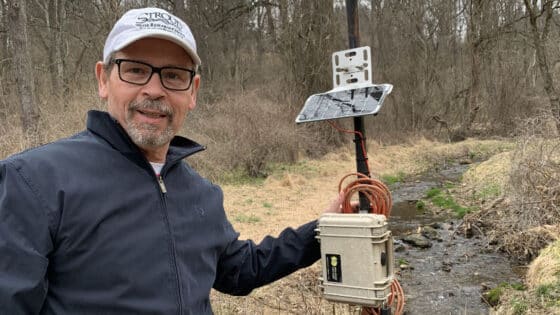Ensign, S.H., M.W. Doyle, and M.F. Piehler. 2013. Earth Surface Processes and Landforms 38(6):655–660.
Abstract
How does river hydrology and morphology change due to tidal influence? We contend that this is a question of particular consequence to many earth surface disciplines, but one that has not been adequately addressed. Previous studies have relied on gradients in channel morphology and stratigraphy to infer energy regime of channels. However, in tidal rivers geomorphology influences the energy regime while the energy regime influences morphology; thus, geomorphic and stratigraphic patterns do not fully resolve the mechanisms which lead to change. We addressed this problem by comparing measurements of hydraulic energy and channel morphology along a tidal gradient to predictions of these characteristics in the absence of tides, and attributed the differences to tidal processes. Measurements of discharge, channel area, and energy dissipation (in kJ day–1) were made over a 24·8 hour period at four sites spanning the non‐tidal to tidal freshwater Newport River, NC. We then predicted those characteristics under non‐tidal conditions using hydraulic geometry relationships and literature values from coastal plain rivers. Discharge was enhanced more than 10‐fold by tide, and this tidal effect increased from upstream to downstream along the tidal gradient. Cross‐sectional area increased three‐fold due to tide. Energy dissipation measured in the upper tidal river was four‐fold lower than predicted to occur in the absence of tide because tides decreased average velocity and discharge. Energy dissipation measured downstream was similar to that predicted to occur without tides, although there was large uncertainty in predicted values downstream. While this limited dataset does not permit us to make broad generalizations for definitive models, it does provide a proof‐of‐concept for a new approach to addressing a critical problem at the interface of fluvial and coastal morphology.


